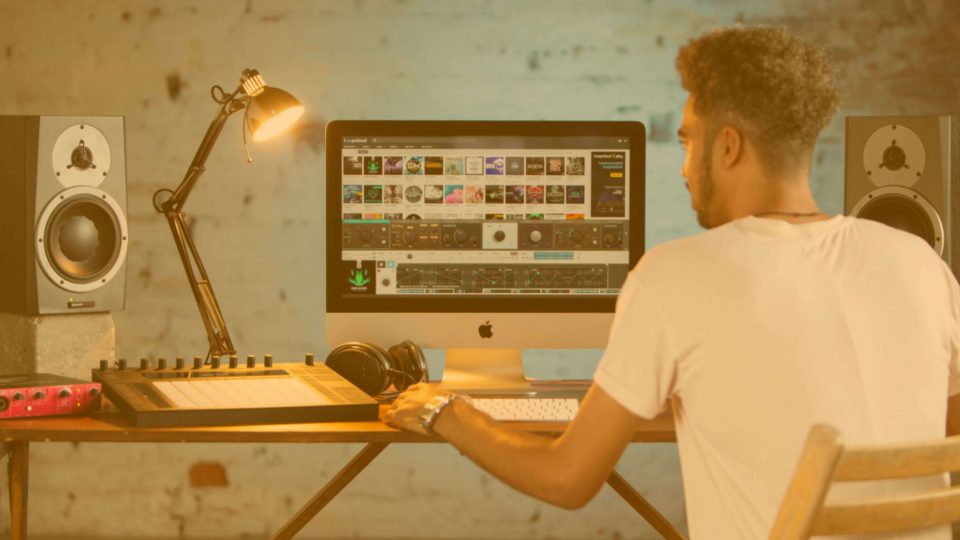History of Lo-fi: How Did Lo-fi Hip Hop Take Center Stage?
Now that we’ve dabbled in how to make Lo-fi, we thought it would be a super cool idea to dive into what Lo-fi actually is and why it came to be.
Lo-fi Hip Hop has swarmed YouTube with so many channels that output a variety of Lo-fi. 24-hour live streams of chill beats to listen to while studying or gaming… or, of course, just casual listening.
Today, Lo-fi is full of the nostalgia of sounds from ’90s Hip Hop and anime, vinyl crackle, low fidelity cassette tapes, etc. Merged with a more genuine method of recording and keeping organic mistakes in the piece, you have a genre of music that went from being an outsider to being mainstream.
What is Lo-fi Music?
Lo-fi music, where lo-fi is an abbreviation of low fidelity, is the polar opposite of high fidelity music. Fidelity translates to faithfulness. In a musical context, it means faithfulness to a sound. A hi-fi label on music equipment means the piece of equipment reproduces the signal as accurately as it can, and fidelity is a buzzword when talking about sound quality.
Lo-fi recordings are more often than not full of distortion and noise. Before people began to use the term “lo-fi” to describe a genre, people would use the term to describe music made with substandard equipment. A great example of the type of music typically thrown into this category was a lot of ’60s garage rock and ’70s punk rock, and later 80’s and 90’s punk too. This music was made in studios that made use of cheap equipment to record and churn out albums as fast as possible.
Before people began to use the term “lo-fi” to describe a genre, people would use the term to describe music made with substandard equipment.
As more and more indie rock/punk rock bands began to take shape here there and everywhere across the UK and America, the term “lo-fi” soon began to be associated with the grittier side of music emerging in with these ’80s bands. Bands were pumping out music that was not overly conventional and was dubbed under lo-fi. “The thin quality of the recordings, the layers of tape distortion and hiss, as well as the tendency toward abstract, obtuse lyrics made the music sound different and left of center,” state AllMusic.
As the ’90s came and progressed, lo-fi music took on an even more erratic nature. The music became more outlandish and intently noisy. Beck’s “Loser” was recorded in his producer’s kitchen!
So how has lo-fi gone from alternative styles of rock and roll into the chilled ambient beats we know today? Well, the truth is that no one really knows. But there are two artists who are constantly discussed as being influential. These artists are J Dilla and Nujabes.
J Dilla was an American Hip Hop artist whose works became highly inflienctial. “[J Dilla] felt that hip-hop should be best experienced the way that he experienced it, which was an amount of imperfection, sort of a lo-fi sounding audio experience,” said Questlove.
Nujabes was a Japanese producer whose work was similar to what we now call Lo-fi Hip Hop. Some argue that he helped create a bridge between anime and Lo-fi Hip Hop and gave it the aesthetic it has today.
“The whole idea [of lo-fi hip-hop] is sonic nostalgia, but not in an overly aggressive or ironic way like vaporwave or retro wave,” YouTuber Ryan Celsius, who has a lo-fi channel on the platform, told Genius. “It’s usually beat production that can sound undermixed, containing intended or unintended imperfections with a heavy focus on creative sample use and authentic sounding drums kits. It’s usually a tape hiss or some analog distortion set against a simple set of drum loops and an incredible sample selection.”
Lo-fi Hip Hop now has its own space in the spotlight. On YouTube, endless content is constantly streaming on a multitude of channels. Some of the channels are owned by people who curate and stream songs, and other channels are used by users to push out their own content. What’s different about lo-fi is that despite its popularity, there are no big record labels taking up too much space, or single artists to follow—just nostalgia-filled aesthetics, downtempo beats and distortions, hazy vocals, and great samples.
You can easily find awesome Lo-fi samples that are DAW-ready and waiting for you on the Mixxed platform.
The sampling revolution has risen in popularity and shaped music since the early 1970s. Sample culture continues to transform how millions of artists and producers do their thing in DAWs.
You too can break conventional norms, challenge the status quo, and open Pandora’s box of sound design.
Mixxed works with a growing number of sample labels and contributors to provide you with an affordable sample subscription service that’s more accessible than any before.
You’ll have access to our growing catalogue of loops, one-shots and sound effects that you can browse, download and keep forever for less than $3 a month.
Sign up today to find your sound!
